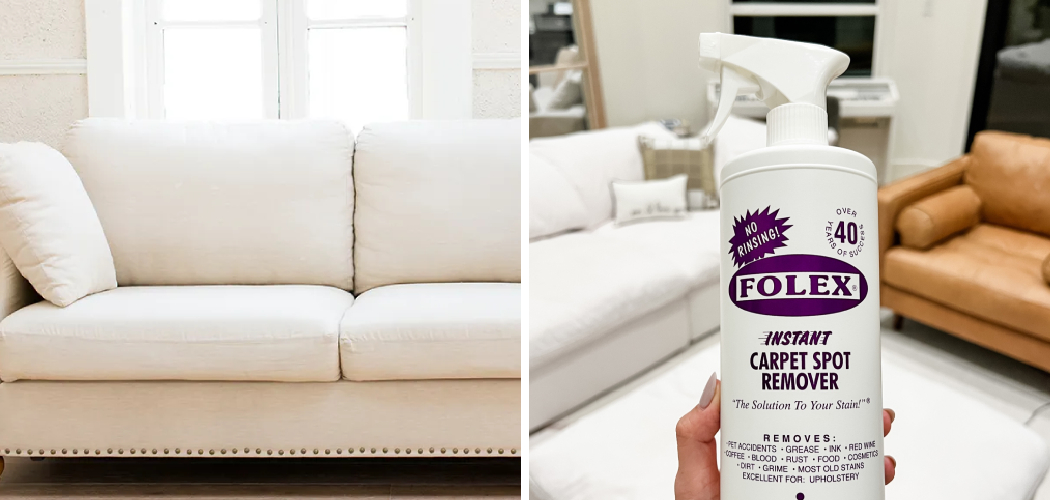Folex is renowned as an effective spot cleaner for upholstery, capable of tackling even the most stubborn stains. Known for its non-toxic, odor-free, and no-rinse formula, Folex is safe for pets and children, making it an ideal choice for busy households. One of the key benefits of using Folex on a couch is its versatility; it can handle everything from ink and wine to grease and coffee stains.
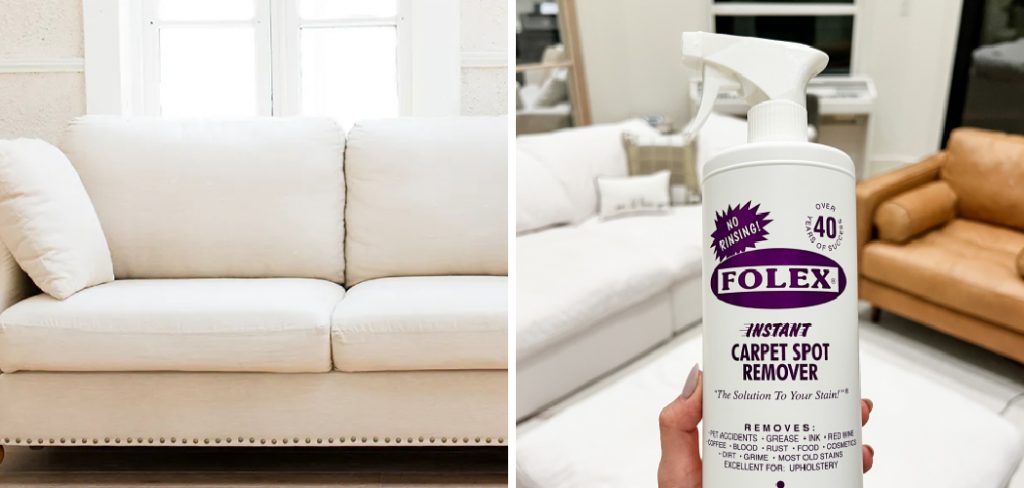
By mastering how to use Folex on couch fabrics, you can ensure your furniture remains spotless and well-maintained. Proper cleaning techniques are crucial to maintaining your couch’s appearance and longevity, preventing long-term damage from untreated stains and dirt accumulation. With Folex, you can effortlessly keep your couch looking fresh and new, extending its life and enhancing the comfort of your living space.
Understanding Folex and Its Benefits
Folex is a water-based, non-toxic spot cleaner designed to remove a wide variety of stubborn spots and stains from upholstery, carpets, and other fabric surfaces. It’s formulated to be safe for use around pets and children, making it an ideal cleaning solution for households looking to maintain cleanliness without harsh chemicals. One of the standout features of Folex is its no-rinse formula—once applied, it doesn’t require rinsing, and it leaves no residue behind.
The benefits of using Folex extend beyond its ease of use. This versatile cleaner is highly effective on a broad spectrum of stains, tackling everything from grease and ink to wine, coffee, and even blood with remarkable efficiency. Having a reliable spot cleaner like Folex on hand is essential for maintaining clean and fresh upholstery, as it allows for quick and effective stain removal. Whether dealing with an unexpected spill or regular upkeep, Folex ensures your furniture remains in top condition, ultimately prolonging its lifespan and preserving its appearance. Incorporating Folex into your regular cleaning routine allows you to enjoy a cleaner, more comfortable living environment.
Gathering Necessary Materials and Tools
Before beginning the cleaning process, gathering all the necessary materials and tools is important to ensure a smooth and efficient experience. You will need the following items:
- Folex Instant Carpet Spot Remover
- Clean white cloths or microfiber cloths
- Soft-bristle brush (optional)
- Vacuum cleaner (for pre-cleaning)
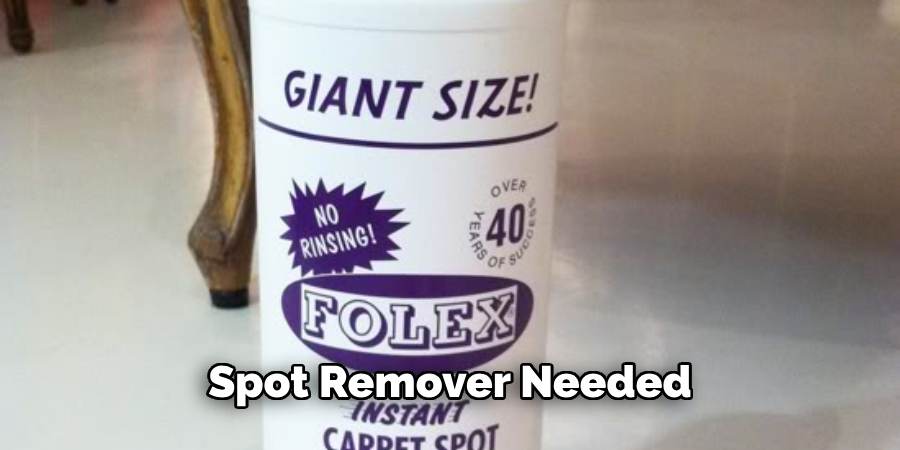
Using clean, white cloths is crucial when cleaning upholstery, as colored cloths may transfer dyes onto the fabric, causing additional stains. White or microfiber cloths are less likely to introduce new contaminants, ensuring that you effectively remove the existing stains without exacerbating the issue. Having all these materials on hand allows you to tackle the stains promptly and proficiently, thereby preserving the cleanliness and appearance of your couch. Make sure to vacuum the couch first to remove any loose dirt and debris, creating a clean surface for effective stain treatment with Folex.
Preparing the Couch for Cleaning
Before applying Folex, properly preparing your couch is essential to achieve the best cleaning results. Follow these step-by-step instructions to get started:
Removing Loose Cushions and Pillows
Begin by taking off any loose cushions and decorative pillows. This allows you to access the entire couch surface and ensures that no spot goes unnoticed. Place the cushions and pillows in an area where you can easily clean them separately if needed.
Vacuuming the Couch Thoroughly
Next, use a vacuum cleaner with an upholstery attachment to thoroughly vacuum the entire couch. Pay special attention to crevices and seams where dust, crumbs, and loose debris tend to accumulate. This step is crucial because removing loose dirt and particles will prevent them from interfering with the cleaning process, ensuring that Folex can penetrate and treat the stains effectively.
Checking the Manufacturer’s Care Label
Before applying any cleaning solution, always check the manufacturer’s care label on your couch. The label provides specific cleaning instructions and warnings that are important to follow to avoid damaging the fabric. Ensure that the upholstery is suitable for water-based cleaners like Folex. If in doubt, test Folex on an inconspicuous area first to confirm it does not cause any discoloration.
By carefully preparing your couch, you set the stage for an effective and successful cleaning session. This preparation not only maximizes the efficacy of Folex but also helps maintain the integrity and longevity of your upholstery.
Testing for Colorfastness
Before using Folex on the entire couch, testing for colorfastness is a critical step to ensure that the cleaning solution does not cause any damage or discoloration to your upholstery. Here’s why it’s essential and how to go about it:
Importance of Testing for Colorfastness
Testing for colorfastness involves applying a small amount of Folex to an inconspicuous couch area to see if the fabric’s color holds up without bleeding or fading. This step helps to prevent any potential damage to the visible areas of your couch, ensuring that the fabric remains intact and beautiful after cleaning.
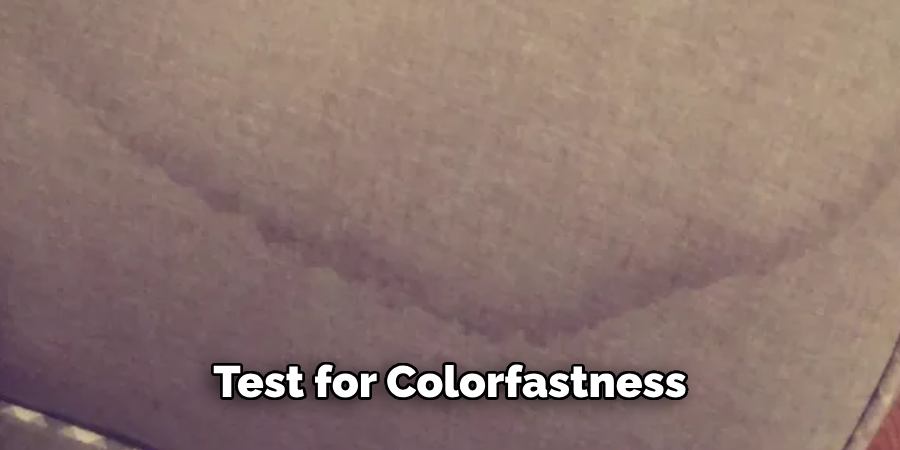
Step-by-Step Instructions for Conducting a Colorfastness Test
- Choosing an Inconspicuous Spot: Select a hidden area on your couch, such as the back of a cushion, the underside of a cushion, or a section of fabric on the back of the couch that is rarely seen.
- Applying Folex: Lightly spray a small amount of Folex onto the chosen area. Ensure you do not saturate the fabric.
- Blotting with a Clean White Cloth: Use a clean white cloth to blot the area where you applied Folex. Observe the cloth to check for any color transfer from the fabric.
- Allowing the Area to Dry: Let the tested area dry completely. This step is crucial as some discoloration or damage may only become apparent once the fabric is dry.
- Inspecting for Any Discoloration or Damage: Once dry, closely examine the area for any signs of discoloration, fading, or damage.
Tips for Proceeding
If no color transfer, discoloration, or damage is observed, you can confidently clean the entire couch with Folex. However, if you notice any issues, it is best to consult a professional cleaner or consider alternative cleaning solutions that are compatible with your couch’s fabric.
How to Use Folex on Couch: Applying Folex to Stains and Spots
Step-by-Step Instructions for Applying Folex
1.Identifying Stains and Spots on the Couch
Begin by thoroughly inspecting your couch to identify all areas affected by stains or spots. Pay close attention to high-traffic areas where stains are more likely to occur. Note the type of stains you’re dealing with, as this may inform your approach to cleaning.
2.Shaking the Folex Bottle Well Before Use
Before using Folex, ensure you shake the bottle well to mix the solution properly. This helps activate the ingredients, making the cleaner more effective in tackling tough stains.
3.Applying Folex Directly to the Stained Area
Once the Folex solution is ready, apply it directly to the stained area. Make sure to cover the entire stain adequately, but avoid oversaturating the fabric. This ensures that Folex can penetrate the stain without causing excessive moisture on the upholstery.
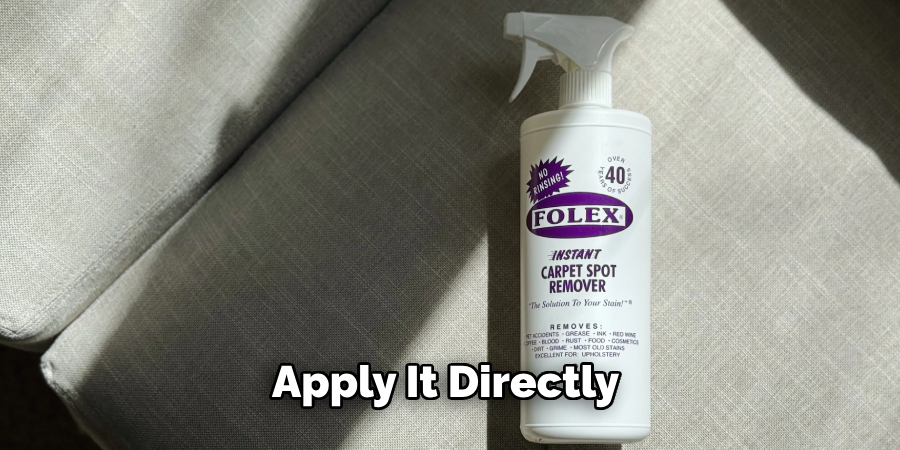
4.Use a Clean White Cloth or Soft-Bristle Brush to Gently Agitate the Stained Area
After applying Folex, use a clean white cloth or a soft-bristle brush to gently agitate the stained area. Agitating helps to break up the stain, allowing Folex to lift it from the fabric. Be sure to use gentle but firm motions to avoid damaging the upholstery.
Techniques for Effective Stain Removal
Blotting, Not Rubbing, to Lift the Stain Without Spreading It
Blot the affected area with a clean white cloth to remove the stain. Avoid rubbing, as this can spread the stain and push it deeper into the fabric. Blotting lifts the stain from the upholstery, making it easier to remove.
Working from the Outside of the Stain Toward the Center to Prevent Spreading
When blotting the stain, start from the outer edges and work your way toward the center. This technique prevents the stain from spreading and ensures that it is contained and removed effectively.
Reapplying Folex and Repeating the Process if Necessary for Stubborn Stains
For particularly stubborn stains, you may need to reapply Folex and repeat the agitation and blotting process. Persistently working on the stain in this manner helps achieve thorough removal.
Tips for Handling Different Types of Stains
Grease Stains
For grease stains, ensure you blot thoroughly with Folex and consider laying down an absorbent material like cornstarch to help lift the grease.
Ink Stains
Ink stains can be challenging; it’s essential to act quickly. Use Folex to blot the ink, and if necessary, repeat the process several times until the stain fades.
Wine and Coffee Stains
Apply Folex immediately to prevent the stain from setting for wine and coffee stains. Blotting quickly and reapplying Folex as needed can effectively remove these stains.
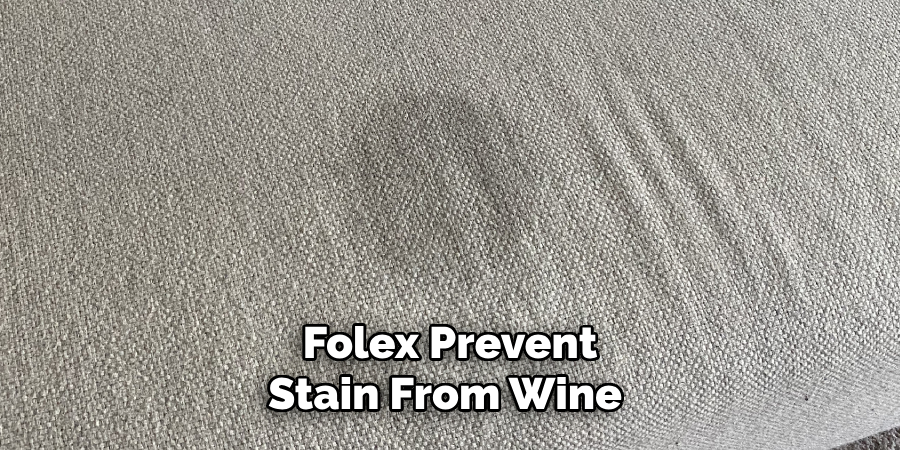
How to Use Folex on Couch: Blotting and Drying the Cleaned Area
Importance of Blotting the Cleaned Area to Remove Excess Moisture and Cleaner
Once you’ve treated stains with Folex, it’s crucial to blot the cleaned area to remove any excess moisture and cleaner. Leaving moisture on the fabric can lead to damage or mildew growth. Use a clean, dry white cloth to gently blot the area until it feels dry to the touch. Avoid over-wetting the fabric during cleaning to minimize the risk of harm.
Step-by-Step Instructions for Blotting and Drying
- Blotting Gently with a Clean Cloth: After applying Folex to the stain, take a clean, dry white cloth and gently blot the area. Press lightly to absorb the moisture without pushing it further into the fabric.
- Allowing the Cleaned Area to Air Dry Completely: Once you’ve thoroughly blotted the area, let it air dry completely. Make sure the area is dry before using the couch again to prevent any residual moisture from causing issues.
Tips for Ensuring Thorough Drying to Prevent Any Residual Moisture
- Use Multiple Cloths: If the first cloth becomes damp, switch to a new, dry one and continue blotting until the fabric is dry.
- Ensure Adequate Ventilation: To expedite the drying process, ensure your room is well-ventilated. Opening windows or using a fan can help.
- Elevate Cushions: If possible, elevate cushions to promote air circulation around the cleaned area, aiding in faster drying.
Adhering to these guidelines ensures your couch remains in prime condition, free from damage and mildew.
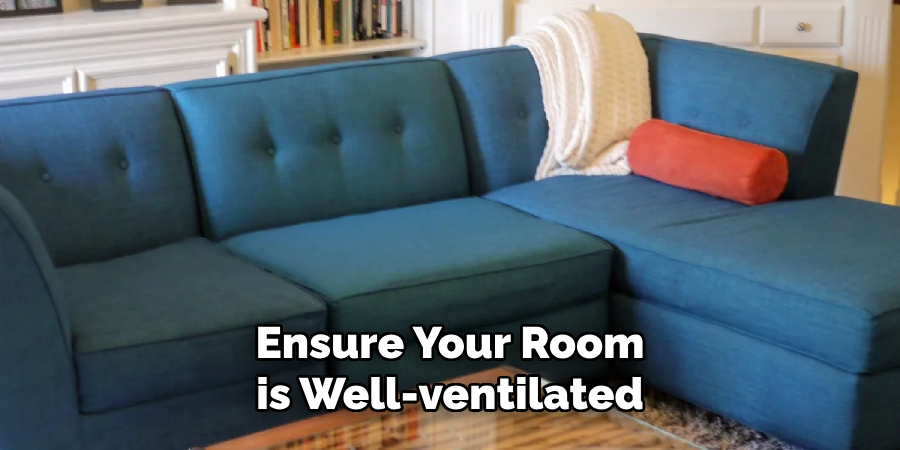
Conclusion
Cleaning and maintaining your couch with Folex involves several straightforward steps. Start by preparing the couch, ensuring all surfaces are clear of debris. Test for colorfastness in an inconspicuous area to avoid any damage. Apply Folex directly to the stain and gently blot with a clean, dry white cloth to absorb the moisture. It’s crucial to blot thoroughly to prevent any excess moisture from remaining, which could lead to mildew or fabric damage. Regular maintenance, including weekly vacuuming and prompt attention to spills and stains, helps keep your couch looking fresh.
Using Folex simplifies the spot-cleaning process, making it both effective and easy to keep your upholstery pristine. Incorporate routine cleaning practices to prolong the life and beauty of your couch. By following these steps on “how to use Folex on couch,” you ensure a clean and inviting seating area for years to come.
